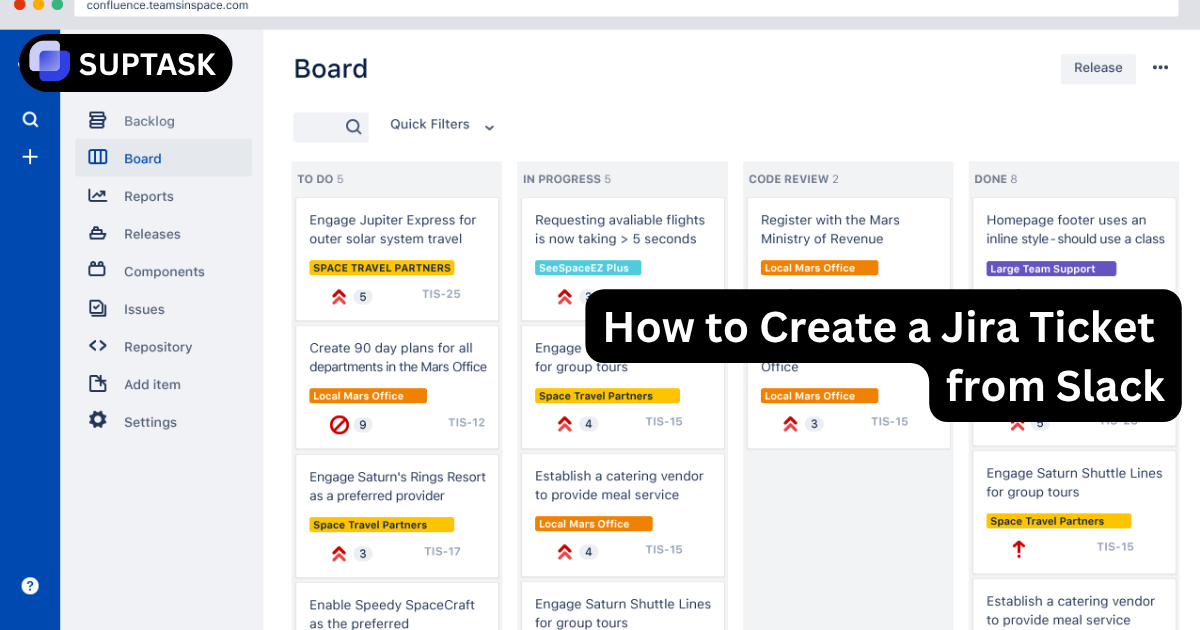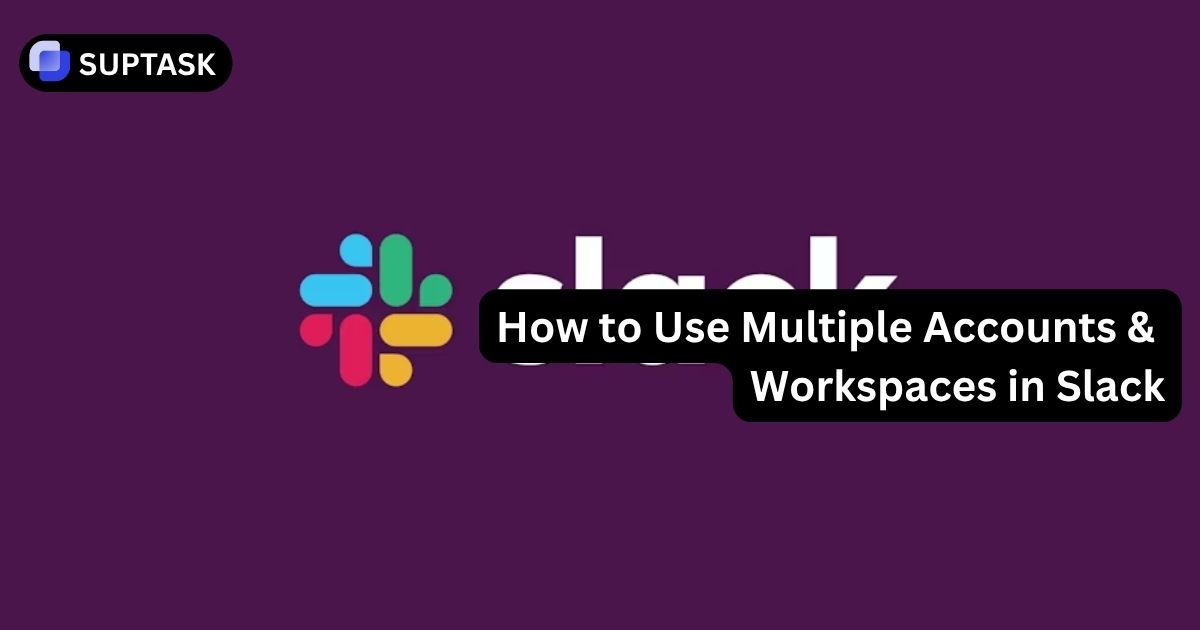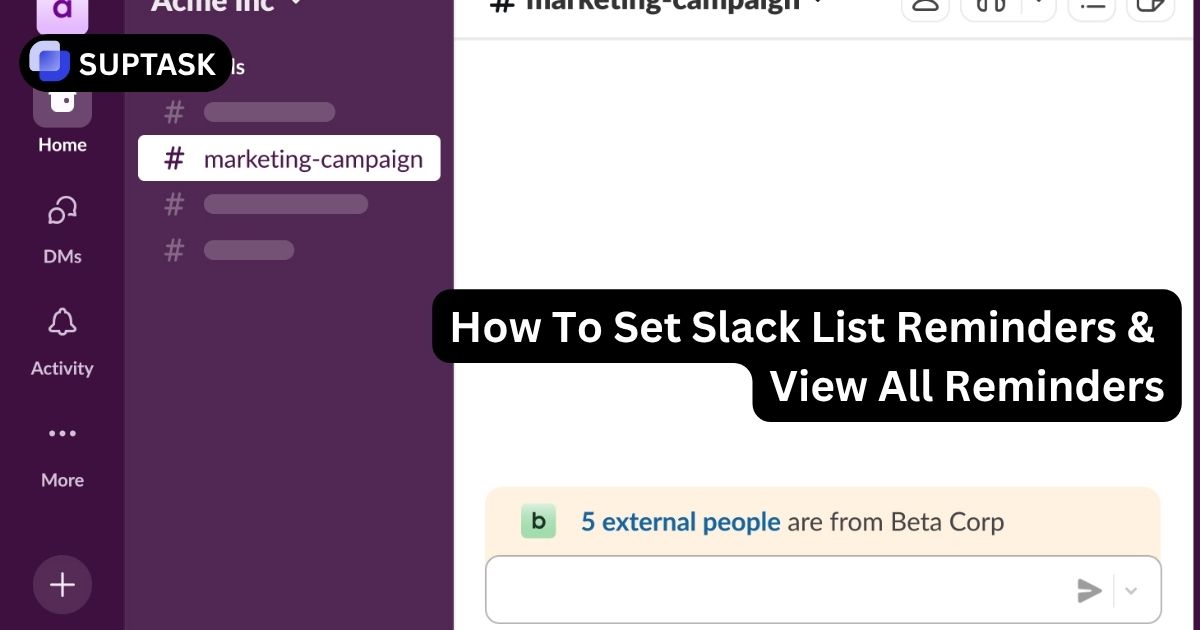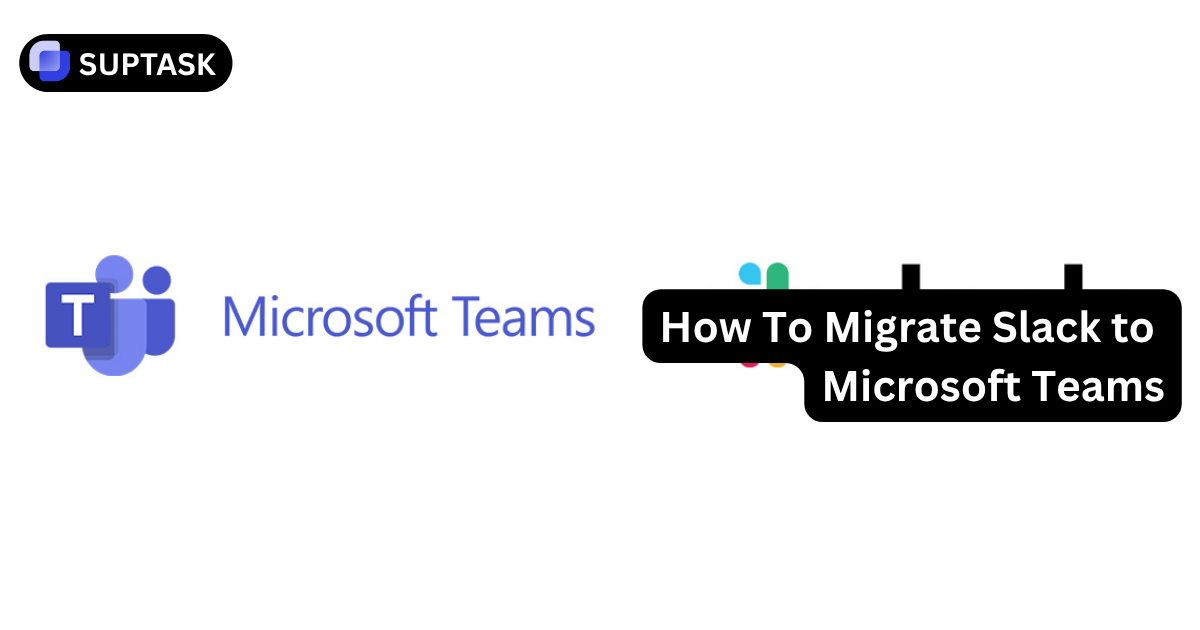Effective communication is the backbone of any productive team, and managing emails effectively is a critical part of this process. Did you know that teams leveraging Slack’s email integrations report up to 30% higher productivity?
By integrating your emails into Slack, you can bring essential updates, conversations, and notifications into one centralized location. This guide will walk you through how to set up email-to-Slack integrations, troubleshoot common issues, customize notifications, and make the most of this powerful feature.
Key Takeaways
- Send emails directly to Slack channels or direct messages (DMs) to ensure your team stays updated on critical matters.
- Quickly manage and respond to emails without leaving Slack, enhancing team collaboration and efficiency.
- Tailor email alerts with personalized names, emojis, or icons to make them easily recognizable.
- Safeguard sensitive information with encryption and secure email configurations.
How to Send an Email From Slack
Although Slack is not an email client, it works well with email workflows, users want to know how to send email from Slack by means of native features and integrations. This way, teams get to handle communication in one place instead of jumping between inboxes and chat.
The following are the steps for doing that:
1. Use the “Email App” for Slack: In the case of installing Slack's official Email app from the App Directory, it is easy to connect and then create an email action anywhere in the channel to send external addresses the messages directly. A user can enter /email in a channel, add the recipient’s address, subject, and message, and Slack sends it as a formatted email.
2. Forward Emails into Slack: Some teams might want the opposite, that is, emails forwarded into Slack. It is possible for each Slack channel to have a different address for the emails to be forwarded to, hence incoming emails can be made to appear as messages. In this way, everyone is kept up to date without the need to go and check external inboxes.
3. Use Workflow Builder or Integrations: If your company is using tools such as Outlook or Gmail, you can get email notification to be automated through Workflow Builder or simply take advantage of an integration like Suptask, a help desk solution designed for Slack. Suptask enables you to handle the tickets and emails within Slack, so that you will not have to leave your workspace to send, get, and collaborate on messages with clients or partners.
In this case, Slack turns into a primary means both for messaging and email collaboration, thus helping users to be less cluttered and more responsive without having to leave their workspace.
Set Up Email Integration in Slack

The email integration in Suptask allows you to receive emails and automatically create tickets inside Slack. You can then quickly work on the tickets inside Slack, like any other triage ticket.
Key Benefits of Suptask Email Ticketing Integration:
- Centralized communication for improved productivity
- Seamless ticket management within Slack
- Real-time email replies sent directly from Slack
Replies on the Suptask ticket in Slack will automatically be sent as replies to the end-user who submitted the ticket via email.
Users will receive a confirmation email when their ticket has been created. This allows them to reply to the ticket via email without being inside Slack.
Leveraging Suptask for Advanced Email Management
Suptask is an excellent solution for teams managing customer support or ticketing systems. This app turns email queries into actionable tickets directly within Slack.
Benefits of Suptask Integration:
- Create, manage, and resolve tickets in Slack without leaving the platform.
- Send real-time responses to customers via email while collaborating with your team.
- Track ticket progress with robust analytics and reporting tools.
How to Get Started with Suptask:
- Install Suptask from the Slack App Directory.
- Connect your email account and configure ticket settings.
- Assign incoming emails to team members and manage them from designated Slack channels.
Why Forward Emails to Slack?
Ever missed an important email in a sea of unread messages? You’re not alone. Slack integration helps by:
- Centralization: All updates land in Slack so you don’t miss important emails.
- Collaboration: Teams can discuss email content in Slack channels.
- Time Savings: No more app switching.
Slack lets you assign unique email addresses to channels or direct messages (DMs) so your team gets only what they need and not the noise.
Ways to Forward An Email To Slack
.webp)
There are several ways of integrating email to Slack, depending on your plan, how you want to use emails after they've been sent to your workspace, and whether you wish to track statistics.
1. Using Slack’s Built-In Email Addresses
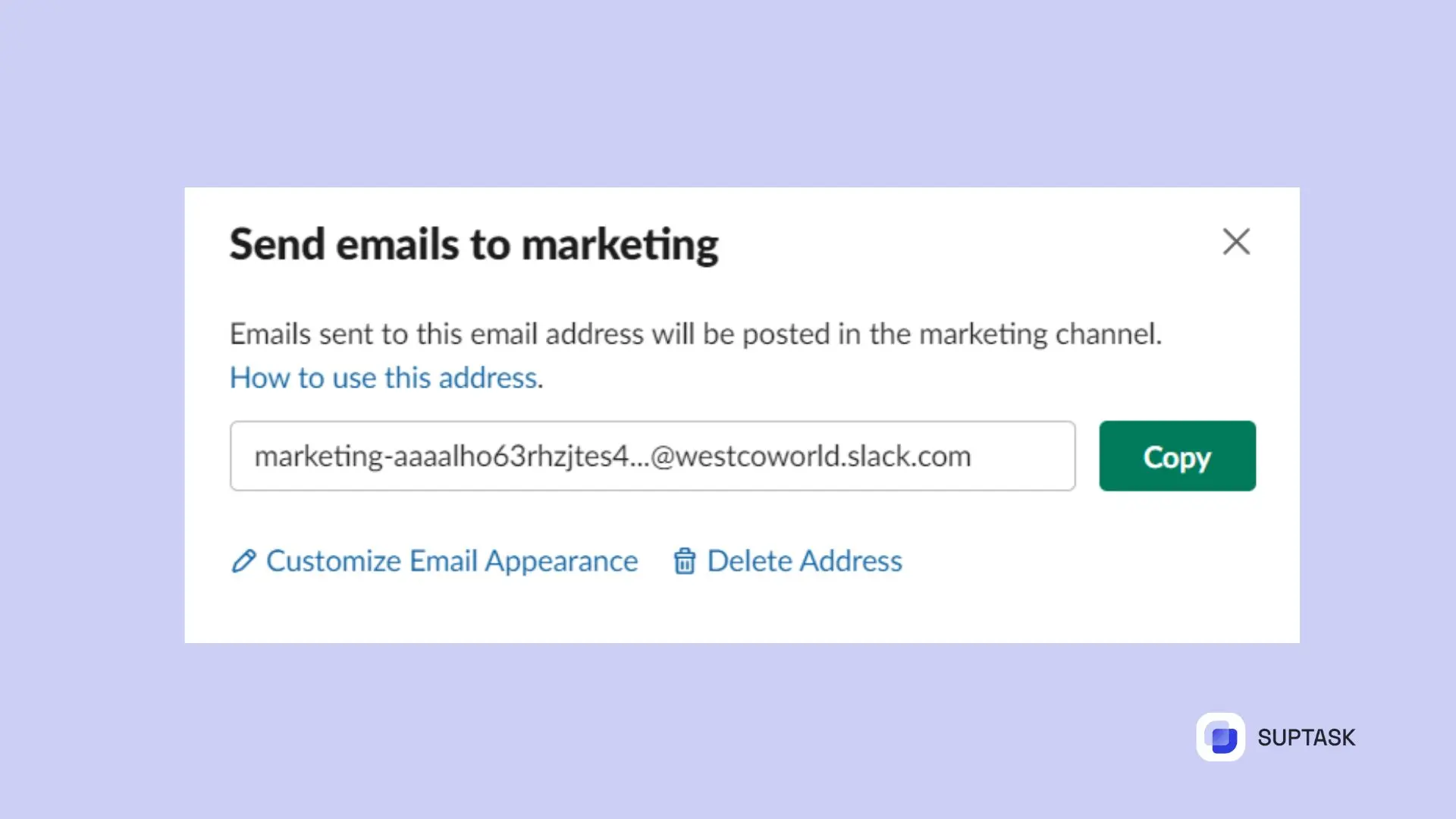
- Open the Slack workspace and navigate to the desired channel or DM.
- Click the channel or member name in the header.
- Go to the Integrations tab and select Send emails to this channel.
- Click Get Email Address to generate a unique email address.
- Save this email address and configure your email client to forward messages to it.
Why use Slack’s built-in email integration?
Slack’s email forwarding feature is ideal for teams that need simple solutions to share email updates without switching platforms. However, for more advanced workflows, third-party tools can offer enhanced capabilities.
2. Third-Party Apps for Enhanced Integration
For more advanced workflows, third-party tools can enhance the email-to-Slack experience:
- Slack’s Email App: Simple and reliable for forwarding emails to specific channels.
- Zapier: Automates workflows by connecting your email client to Slack with custom triggers and actions.
- Mailparser: Extracts specific email data and sends it to Slack in a structured format.
- SharedInbox: Perfect for teams that share responsibility for managing an email account.
Each app comes with its unique set of features, so consider your team’s needs before selecting one.
3. Creating a Slack channel or direct message email account
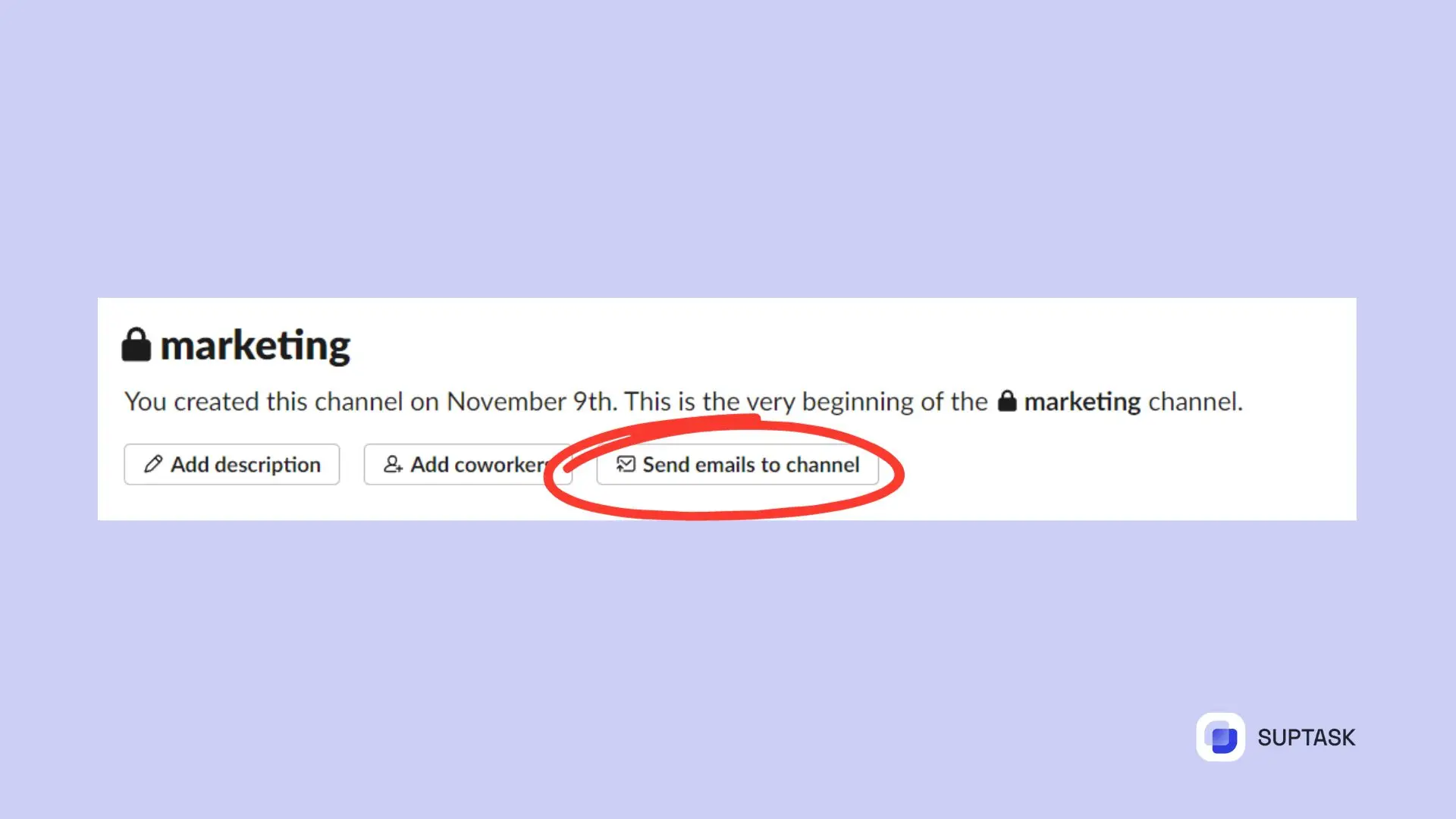
Anyone can set up a channel or direct message email account by default. Anyone with the email address can send emails to Slack once it has been created for a chat.
Since no permissions are established, anyone within can "blow up" that channel with email notifications, frequently resulting in the same problem you attempted to prevent.
This is why it could be better. Slack won't give you any analytics on these emails or clicks.
1. Open the channel or DM you’d like to send an email to.
2. Click the channel or member name(s) in the conversation header.
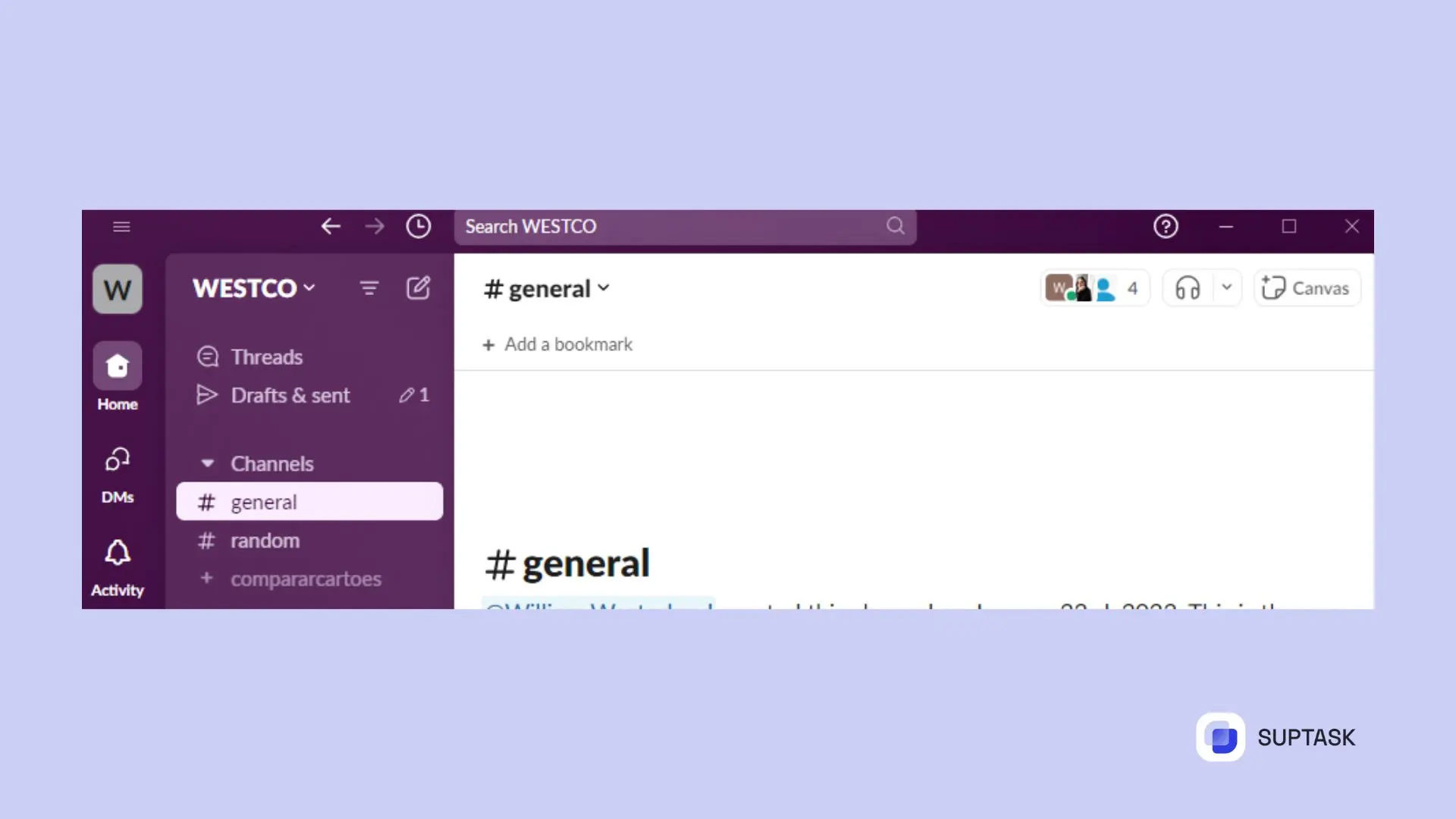
3. Click the Integrations tab.
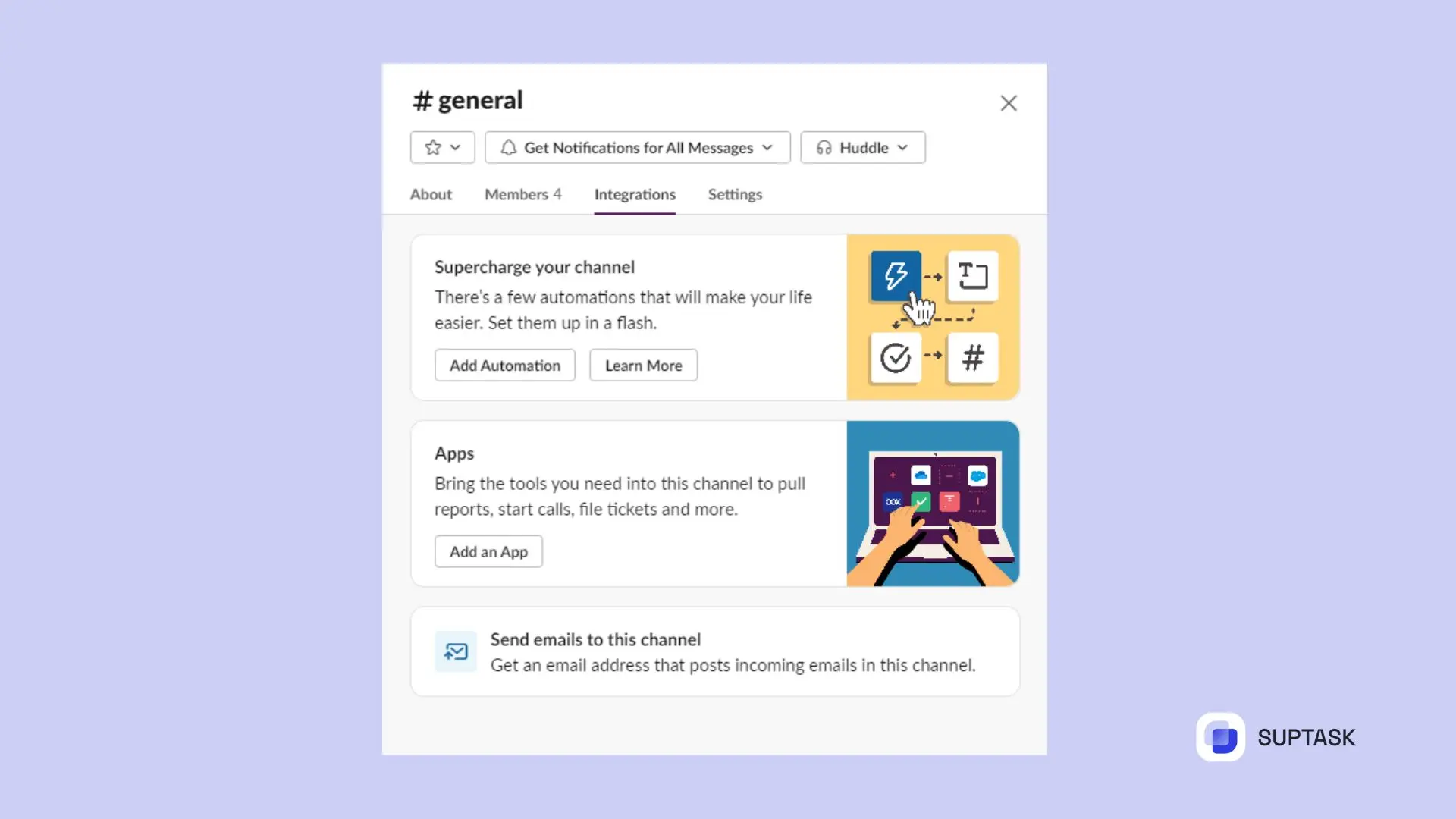
4. Select Send emails to this [channel] or [conversation].
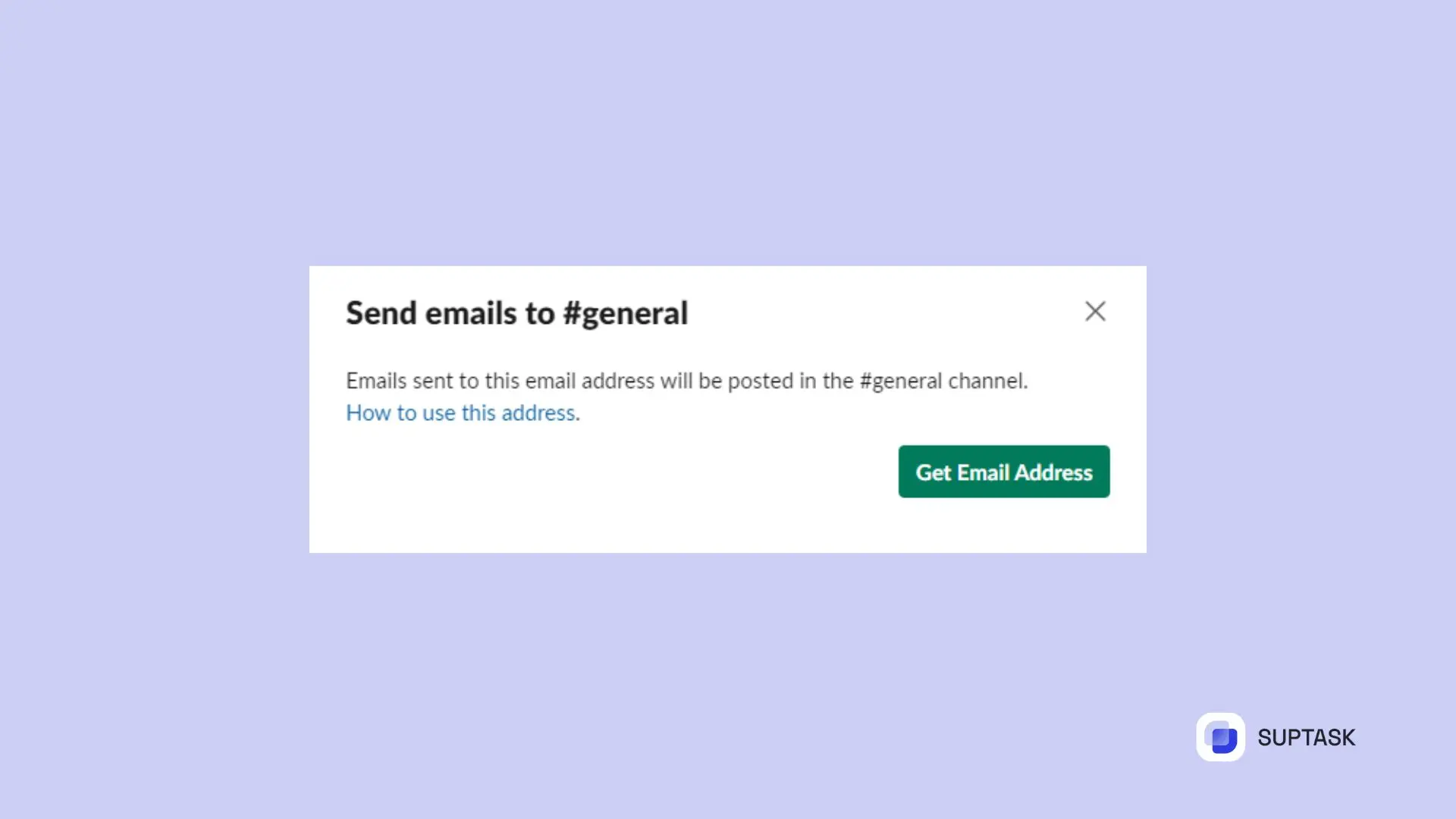
5. Click Get Email Address.
All done! From here, the emails you send to the address will be forwarded to the Slack Channel. Later, if needed, you can also delete Slack messages.
Setting Up an Email Forwarding Address
Getting email forwards set up for your Slack channels and direct messages is straightforward. Here are the simple steps:
- Navigate to the ‘Preferences’ drop down menu in Slack
- Select ‘Messages & Media’
- Scroll to the bottom
- Click on ‘Get a Forwarding Email Address
One may wonder who has the power to generate these email addresses. Commonly, it is the domain of those who own or run email systems. However, it is crucial to think about possible security problems. Slack does not provide default permissions or analytics for these emails and clicks. Therefore, employees could unintentionally overwhelm a channel with notification emails.
Securing your Slack email allows easy email sending. Simply add the address in the 'To' field like usual emails. Be sure to click "Save" so your changes take effect. This address can be used by anyone who has it. Customizing forwarded emails' look is also simple through the "Customize Email Appearance" settings.
Supported Email Clients
Let us now talk about email clients that work well with Slack. You will be pleased to learn that many email programs seamlessly connect to Slack, such as:
- Gmail
- Microsoft Outlook
- Mailbird
- Clerk
People usually add email integrations by installing an extension from their email program's online store. These additions let programs work together through email.
1. Gmail Integration
If you’re a Gmail user it’s easy:
- Go to Gmail Settings: Open Gmail, click the gear icon and go to See all settings > Forwarding and POP/IMAP.
- Add Slack Email Address: Click Add a forwarding address and enter the Slack email address for your channel.
- Verify: Gmail will send a confirmation email to Slack. Approve it from Slack to complete setup.
- Create Filters: Want to forward only certain emails? Create filters in Gmail to forward those to Slack.
2. Outlook Integration
Outlook users can do this:
- Go to Outlook Settings: Mail > Forwarding.
- Add Slack Email: Enter the Slack email and save.
- Create Rules: Use rules to forward specific emails to Slack for more customization.
Customize Your Email Appearance in Slack
While you've figured out forwarding emails to Slack, there is still room to improve how emails look. No one wants to scroll through messages that all look the same. The answer is changing how emails appear in Slack. You can give emails names and pictures to make them pop out more. This helps them catch your coworkers' eyes.
When emails land in Slack their appearance matters. Slack gives you several options to customize:
- Custom Sender Name: Instead of showing an email address, give your email a name like “HR Updates” or “Customer Feedback”.
- Profile Image: Use an icon or logo to represent the email source. For example, a shopping cart icon for e-commerce notifications.
- Rich Text Formatting: Use Slack’s formatting or integrate third-party apps to make your emails look good and doable.
💡 Pro Tip: Customizing email appearance helps with prioritization by visual cues so you don’t miss important updates.
Images and Custom Names
Customizing emails isn’t just about functionality—it’s also about engagement. Here’s how to add a personal touch:
- Images: Use your company’s branding for forwarded emails. For example, add your company logo so team members can recognize email sources.
- Custom Names: Instead of “System Notification” label emails with specific titles like “IT Alerts” or “Marketing Announcements”.
Forward the email from your inbox to your Slack workspace.
- Open the channel where the email will be forwarded in the Slack desktop client.
- Click on the channel name at the top left corner.
- Go to the ‘Integrations’ tab.
- Select ‘Send emails to Slack’.
- Set up the email forwarding address.
- You’ll then have an option to customize the name that appears in Slack for the forwarded emails.
Let’s enhance the appeal of your emails by incorporating images. Here’s how:
- Open a channel or direct message.
- Click on the plus icon next to the message field.
- Choose ‘Add a photo’.
- Select an image from your library.
The greatest benefit is that there are no set dimensions or file types needed for pictures joined to emails in Slack. This allows you to add any photograph you choose.
Integrating Popular Email Clients with Slack
Connecting familiar email programs for example Gmail and Outlook with Slack is simple. To connect Gmail with Slack, you can:
- Install the Slack for Gmail Add-On from the Google Workspace Marketplace.
- Once installed, open an email and click on the Slack icon.
- Select the channel you want to send the email to.
- Optionally add a message.
- Click ‘Send’.
It's easy to disconnect your Gmail from Slack whenever you want. All you need to do is remove the Gmail Add-On from your Slack account settings. A good idea for HR teams that need to organize their day-to-day activities beyond email is to integrate Slack with a ticketing system tool.
Gmail with Slack
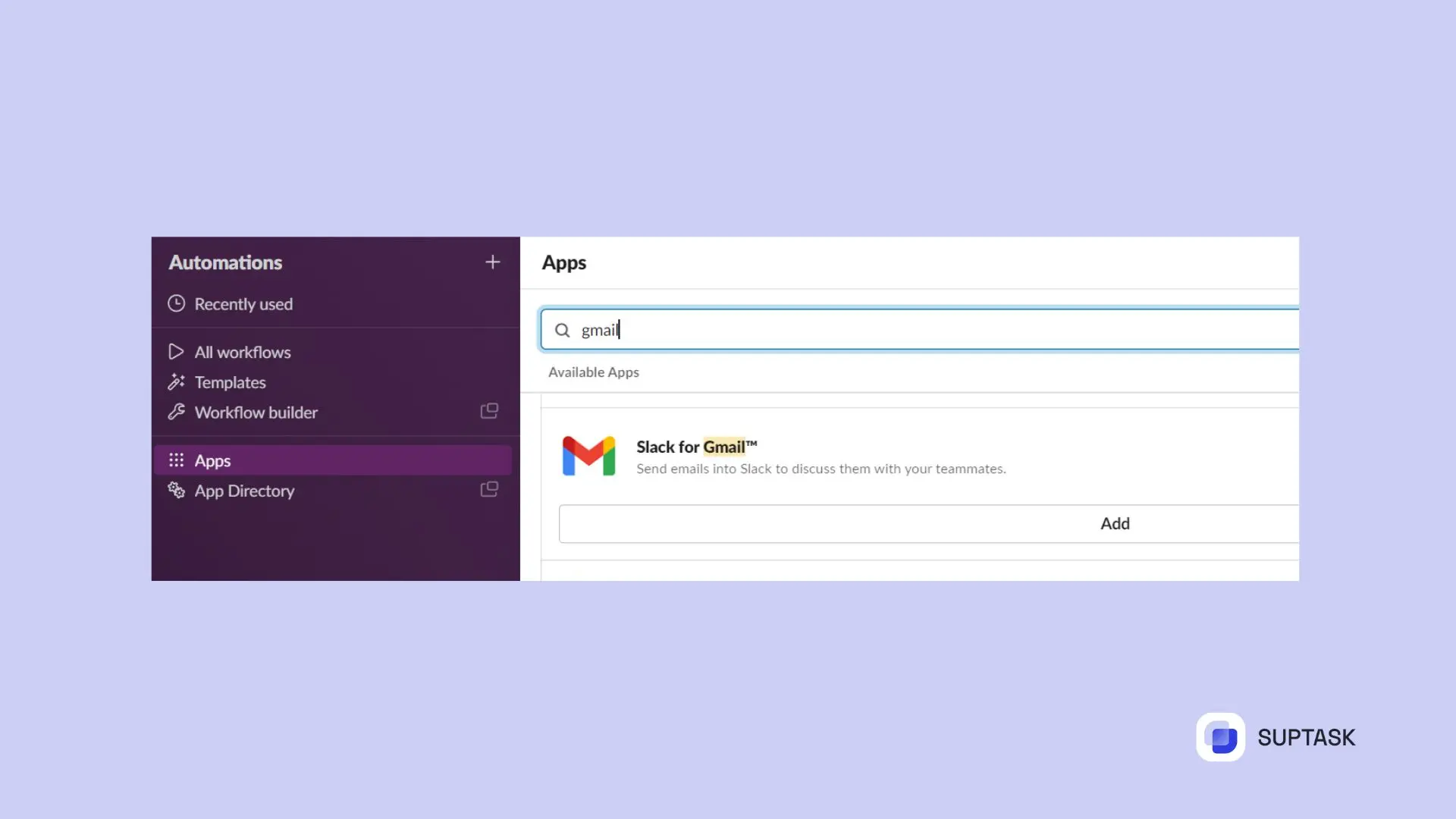
To connect a Gmail account to Slack, follow these steps:
- Open any email in Gmail.
- Click on the Slack icon located on the right-hand side of your inbox.
- Select the communication path or individual intended to receive the forwarded electronic message within the Slack workspace.
- Enter a message if you like.
- Select the ‘Forward’ button.
Slack has an official Gmail add-on so it’s easy:
- Install Add-On: Download the Gmail app for Slack from the Slack App Directory.
- Authorize: Connect your Google account to Slack and grant permissions.
- Send to Slack: Once connected, click the Slack icon in Gmail to forward messages to your channel.
Outlook with Slack
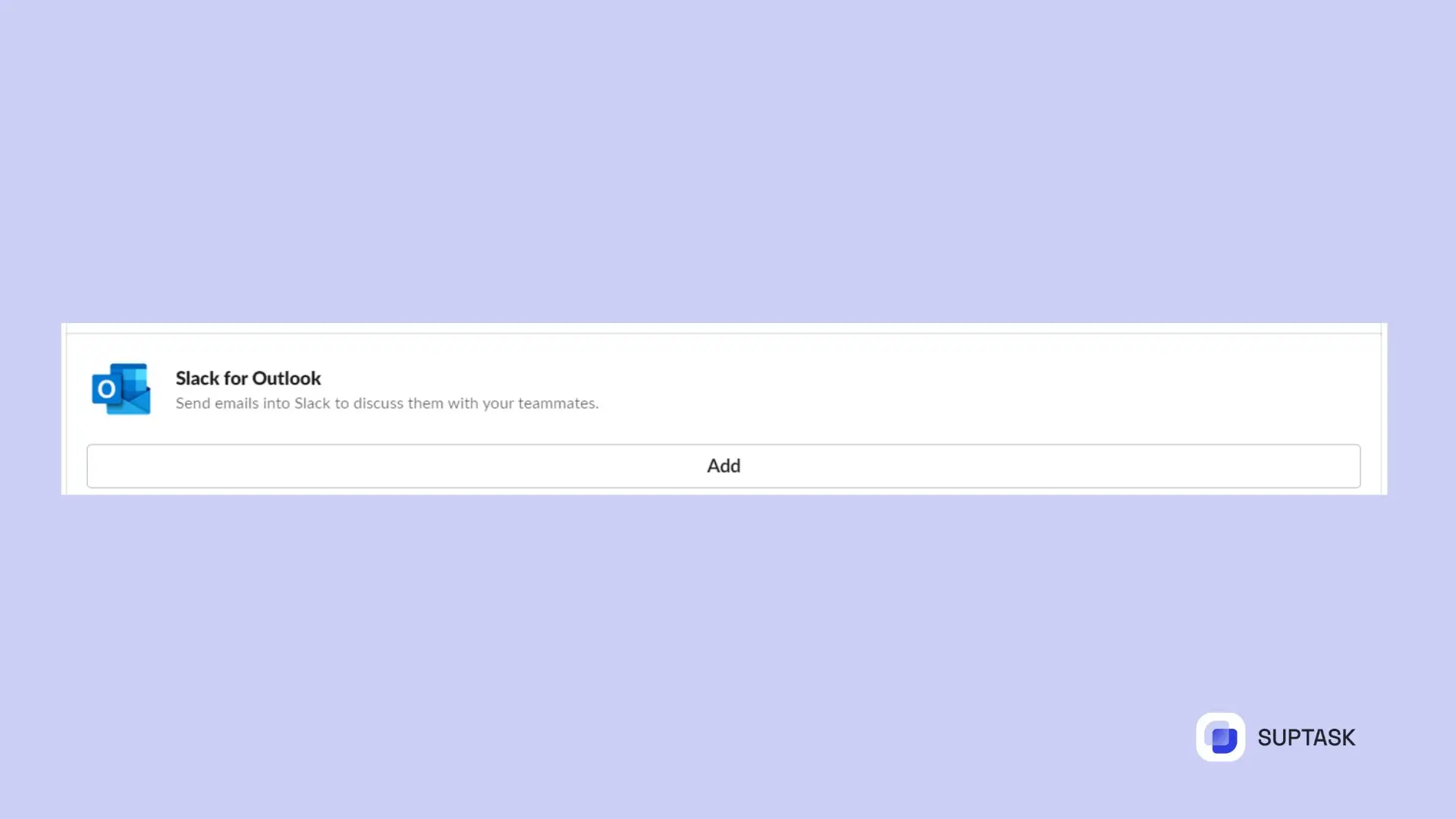
Do not stress if you prefer using Outlook - we have you taken care of. To add the Outlook extension to Slack, just follow these easy steps: click on the Slack app menu, select "Apps and Integrations", search for the Outlook connector, then click "Add". This will sync your Outlook calendar and contacts right into Slack. Now you can freely access all your Outlook information
- Visit the Microsoft AppSource
- Follow the prompts to install the add-on
- Open any email in Outlook
- Click on the Slack icon in the toolbar
- Follow the prompts to connect your Slack account to Outlook
- Grant the necessary permissions
For Outlook, Slack has a dedicated add-in:
- Download Add-In: Find the Slack for Outlook app in the Microsoft Store and install it.
- Link Accounts: Authorize your Outlook account in Slack.
- Forward: With one click, send any email from Outlook into Slack.
Utilizing Slackbot for Forwarded Emails
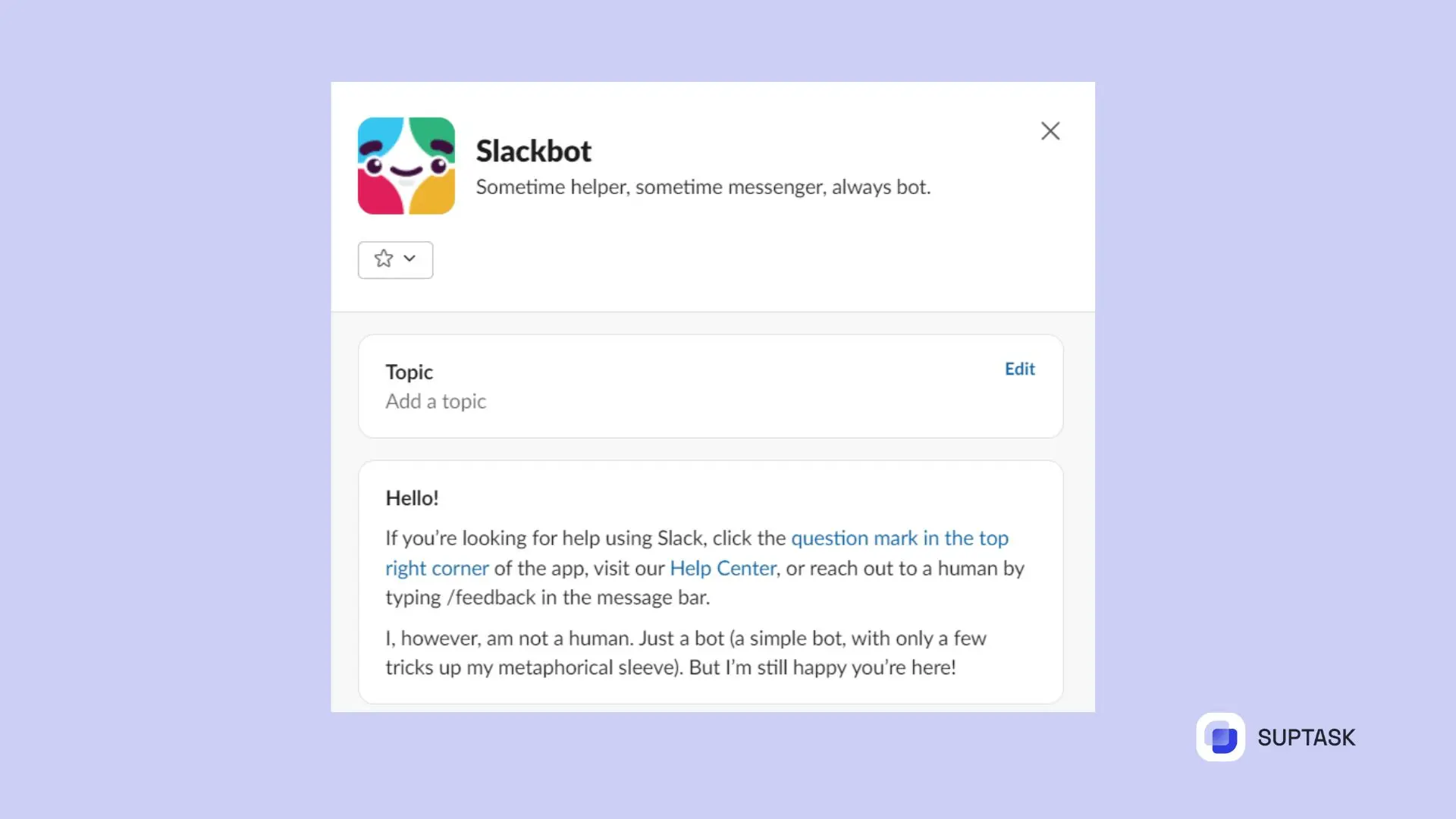
Let's talk about Slackbot. This helper can be your best pal for handling forwarded emails. With a special email address, Slackbot lets you get important messages right in Slack, making it easy to work together on email messages.
Setting Up Slackbot Forwarding Address
Setting up a Slackbot forwarding address is a straightforward process. Simply follow these steps:
- Choose your workspace name from the upper left corner of your screen.
- Click on ‘Preferences’.
- Click on ‘Messages & media’.
- Navigate to the ‘Bring emails into Slack’ section.
- Select ‘Get a forwarding address’.
- Use this forwarding address to send emails to your chosen Slack channel. Copy it for forwarding messages to your preferred communication space there.
Making sure your Slackbot email address works well requires setting up an automatic rule. You can turn forwarding on or off as needed to control email traffic into Slack. Only enable forwarding when you want emails sent to Slack, and disable it otherwise to prevent unwanted messages.
Managing Incoming Emails with Slackbot
Managing incoming emails with Slackbot is a piece of cake. Here’s how it works:
- Establish a dedicated email for corresponding through a Slack channel or private message. This allows team members to easily communicate electronically without sharing personal addresses.
- Slackbot allows users to both send and receive emails directly through the platform. This integration means correspondences will display alongside conversations and files for a more centralized experience.
- You can reply to emails, forward them, or take any other action right from Slack.
It’s a convenient way to keep all your communication in one place.
Advanced Email Integration Options
Slack offers many email options for those wanting more from their work communication. Some of the top features include connecting email accounts, managing messages across platforms, and filtering important updates.
Email Apps for Slack
- Suptask: Great for managing customer support emails.
- Mailparser: Extract data from emails and send structured info to Slack.
- Zapier: Create custom workflows between Slack and your email client.
Integrating Other Email Services with Slack
While other email services like Yahoo, Zoho, or ProtonMail can't directly connect with Slack, apps like Clerk or Mailbird let you use those accounts through Slack. These third-party programs help integrate outside emails into Slack. That means you can easily handle emails from different addresses all in one place within Slack.
For email services without Slack support you can:
- Use third-party automation platforms.
- Configure APIs to forward emails into Slack channels.
- Use SharedInbox for collaborative email management.
Troubleshooting: Common Issues with Email to Slack Integration
.webp)
Even the most dependable systems occasionally have problems, and transferring emails into a Slack channel is one of them. If you're having issues with emails not appearing in Slack as intended, you should troubleshoot the issue.
Owners, administrators, and authorized users can perform this action in the Slack settings.
Delete the old address and create a new one to fix any recalcitrant delivery issues on the Slack platform and return to your email ticketing system.
Resolving Permission Errors in Slack
There is a clear hierarchy in Slack for controlling who can modify posting permissions. Channel Managers, administrators, and owners are in charge of maintaining this system.
They are in charge of determining who is authorized to change specific settings.
These positions are crucial for maintaining order in the office and ensuring that only those with the proper power can make decisions affecting the entire team.
Don't worry if you encounter permission errors, these hitches can be handled skillfully with calculated steps.
Understanding the roles in your Slack workspace and the permissions that accompany them can help you deal with these issues effectively and get your team back to communicating as soon as possible.
Handling Email Delivery Failures
You should take some diagnostic action when emails that should be coming in Slack channels appear to be missing.
First, make sure Slack is authorized to receive emails, then check to see if any aggressive email system configurations or filters are catching them before they arrive. Check that the email address you have on file for your Slack profile is correct.
Sometimes, a simple typo can cause delays in anticipated deliveries.
Occasionally, the issue might not be with Slack per se but rather with protective procedures that your email provider has implemented.
Intended messages may be in spam folders or incorrectly classified due to inbox filtering settings.
Examining these places in detail may show that your system defenses have improperly filtered emails meant for Slack.
By doing investigative work, you may reroute those misdirected conversations into their correct Slack channels, ensuring your ticket system in Slack remains efficient and effective. For a more streamlined approach, consider implementing an internal ticketing system that integrates seamlessly with your Slack setup.
FAQ
How do I forward emails to a Slack channel?
You can forward emails straight to the Slack channel by setting up an automated forwarding rule in your email client that routes messages to a unique email address made for the channel under the "Integrations" settings. If you're looking for a cost-effective solution, check out a free ticketing system that can help manage your communications without additional costs.
Can I customize the appearance of emails in Slack?
You may customize the appearance of emails on Slack by adding symbols, emojis, labels, and photos and giving them notable names to make them stand out more in your channel.
What permissions are needed to manage email integration in Slack?
Workspace owners and administrators have the authority to control Slack's email integration. This includes managing user capabilities related to configuring email addresses for channels and direct messages and turning the ability to receive incoming emails on and off.
Can I integrate my Gmail or Outlook email with Slack?
Of course, you can combine your email with Slack using add-ons available through the Microsoft AppSource for Outlook users and the Google Workspace store for Gmail users.
What should I do if emails are not delivered to my Slack channel?
To fix this issue, ensure Slack email authentication is working correctly, check the settings and filters in your email system, and if the problem still arises, speak with an owner or admin for a more thorough investigation.
Consider creating a new, distinct email account connected to the channel and deleting the old one if required.



